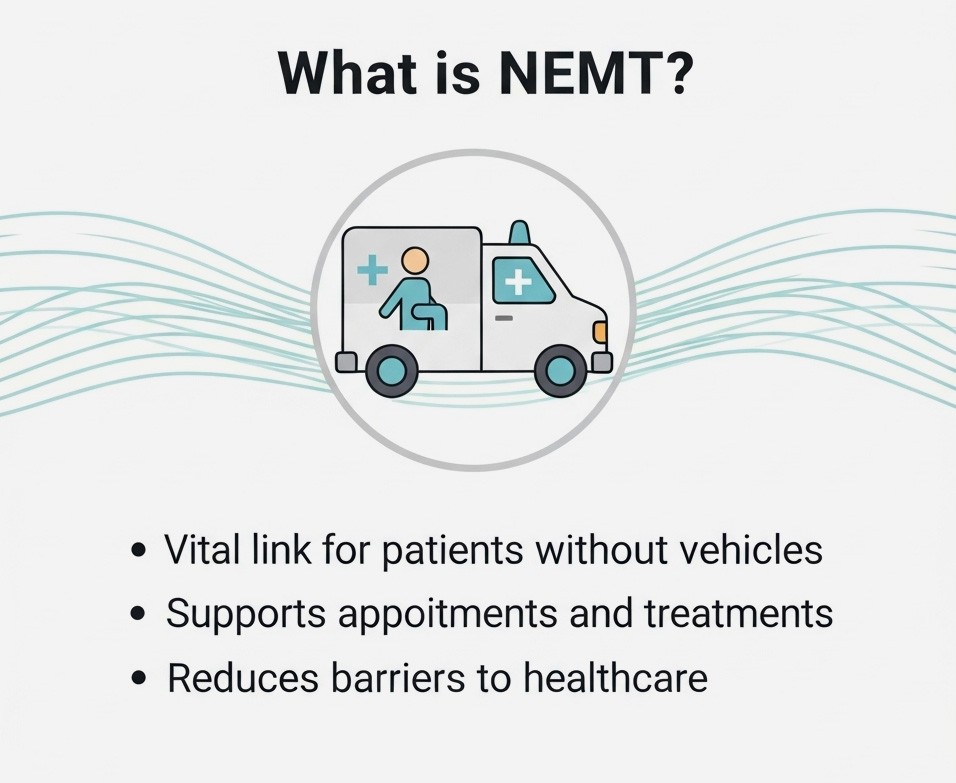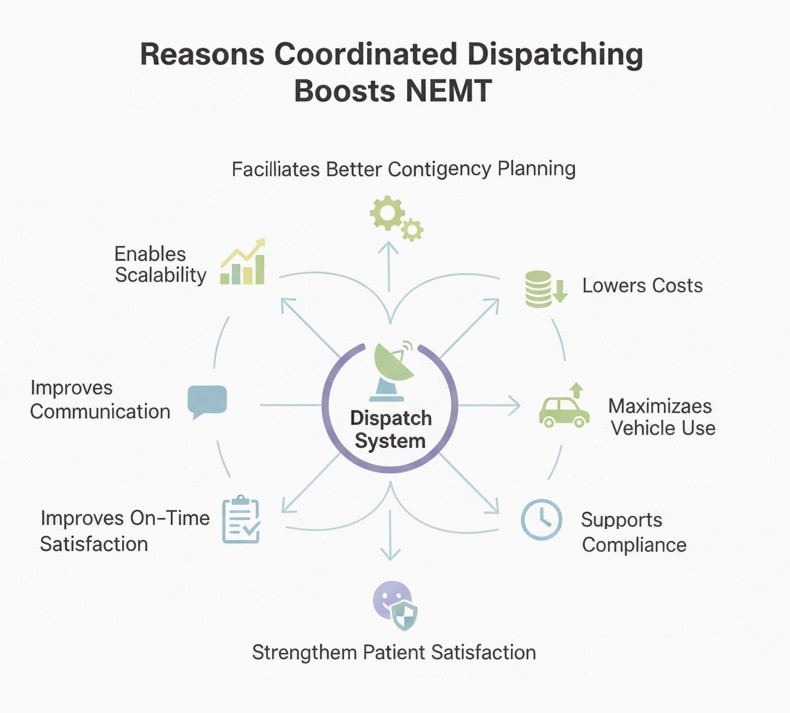Non-emergency medical transportation (NEMT) provides a vital link between patients and the healthcare services they need. It ensures that individuals who may not have access to a personal vehicle — or who cannot travel alone due to age, disability, or medical condition — can still attend appointments, treatments, and follow-up visits. NEMT bridges this gap and, therefore, plays an essential role in supporting health outcomes and reducing barriers to care.
While emergency services often receive the most attention for rapid coordination, the same level of precision is equally important for NEMT. Poor scheduling and inefficient routing can lead to missed appointments, extended wait times, and unnecessary stress for patients and healthcare facilities. To address these challenges, many providers are turning to digital NEMT dispatch software systems that offer automated scheduling and coordination, real-time routing, GPS tracking, and centralized communication. These innovations make it possible to coordinate multiple vehicles and trips seamlessly.
This feature examines several reasons why effective vehicle coordination is indispensable in NEMT operations, highlighting the impact it can have on your business in terms of both operational efficiency and patient satisfaction.

Maximizes Vehicle Utilization and Driver Productivity
A well-organized dispatch scheduling system makes it possible to get the most out of every vehicle and driver on the road. If you strategically group trips based on location and timing, you can avoid sending multiple vehicles to the same area and limit periods when drivers are left idle between assignments. This keeps schedules running smoothly and allows your team to handle more trips in a day without overstretching resources.
Lowers Costs through Route Optimization
Fuel, maintenance, and driver hours are among the largest expenses in NEMT operations, and they can quickly spiral without proper planning. Coordinated routing helps cut down on unnecessary mileage, thereby limiting wear and tear and cutting down on overtime pay. With modern software, you can adjust routes in real time to account for traffic patterns or unexpected delays. This ensures that vehicles stay on the most efficient paths while keeping operating costs in check.
Improves Communication Between Dispatchers and Drivers
Clear communication is essential for keeping NEMT operations running smoothly, and coordinated dispatching provides the structure to make that happen. Real-time updates allow dispatchers to inform drivers immediately about schedule changes, traffic delays, or special rider requirements, which helps minimize any risk of confusion or missed trips. Two-way communication tools built into modern dispatch systems also enable drivers to instantly report any issues they encounter on the road. A steady flow of information keeps trips on track and ensures that both drivers and passengers know what to expect.
Improves On-Time Performance for Patients
Timing matters in healthcare, even when the situation isn’t urgent. Patients often have appointments that are booked weeks in advance and scheduled in tight succession with other treatments or consultations. Coordinated dispatching allows you to account for the distance patients will have to travel, the duration of each appointment, and local traffic conditions so that patients can arrive promptly and avoid disruptions to their care.
Supports Compliance and Reporting
Contracts with Medicaid brokers and insurers often hinge on documented timeliness, completed trips, and adherence to service agreements. A coordinated dispatch process helps create the audit trail you need to verify arrivals, no-shows, and wait times. Accurate data also streamlines billing and helps you spot patterns that could trigger corrective action before they become compliance issues. In short, better coordination makes reporting faster, cleaner, and more defensible.
Strengthens Patient Satisfaction and Confidence
Patients always remember reliable service. When vehicles arrive as promised and drivers are briefed on mobility or assistance needs, riders feel safe and respected throughout the trip. Coordination also supports proactive communication, including ETA texts, status updates, and quick responses to schedule changes. The result is higher satisfaction and stronger relationships with referring facilities.
Facilitates Better Contingency Planning
Vehicles break down, drivers call in sick, and unexpected traffic jams happen. With centralized visibility, dispatchers can reassign trips, shuffle pickups, or insert a nearby vehicle without derailing the entire schedule. Clear escalation rules and spare capacity planning keep critical appointments on track while minimizing ripple effects. Patients and facilities receive timely updates, preserving trust even when plans change.
Enables Scalability as Demand Grows
Growth magnifies small inefficiencies. Coordinated dispatching becomes the backbone that lets you add vehicles, drivers, shifts, or new service areas without losing control. Standardized workflows and real-time data help you balance capacity and refine your fleet mix as volumes rise. Integrations with brokers and care partners further reduce manual work, which lets your team manage more trips with the same headcount. In practice, scalability means higher throughput without sacrificing punctuality or quality of service.

Dispatching Should Be a Strength, Not a Bottleneck
Coordinated vehicle dispatching directly influences patient care and the reputation of your NEMT service. When vehicles, drivers, and schedules work in sync, you create a dependable system that benefits your patients and your business alike. Reliability is part of the service promise in the healthcare industry, and strong coordination can be the factor that sets you apart.












